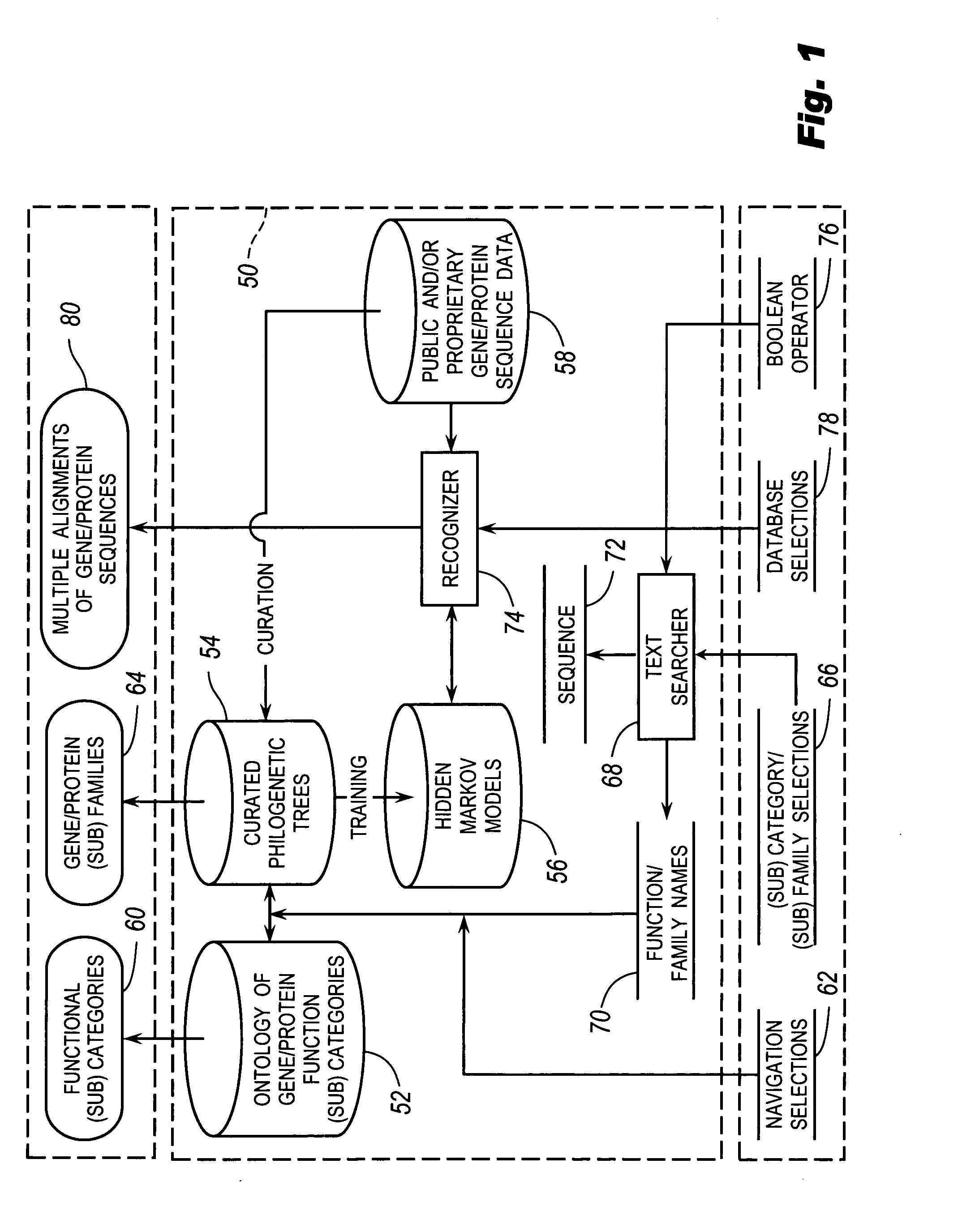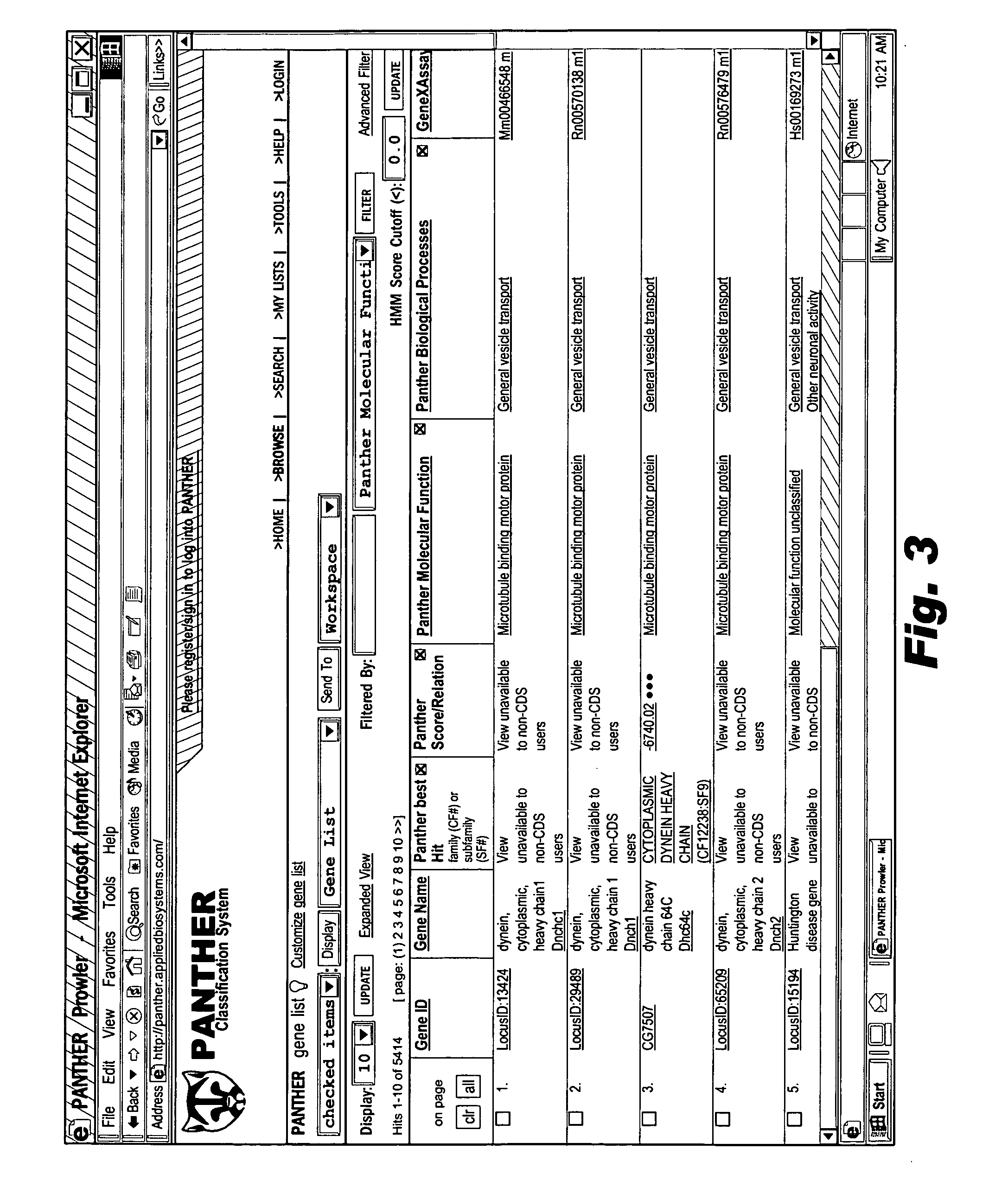Browsable database for biological use
a database and biological technology, applied in the field of biological information indexing and retrieval systems and methods, can solve the problems of not giving guidelines on how to infer the function of proteins, insufficient to specify, and more difficult to make inferences than to be easy, so as to achieve great utility and popularity.
- Summary
- Abstract
- Description
- Claims
- Application Information
AI Technical Summary
Benefits of technology
Problems solved by technology
Method used
Image
Examples
Embodiment Construction
[0066] The following description is merely exemplary in nature and is in no way intended to limit the teachings, their application, or uses.
[0067] Referring to FIG. 1, the browsable database system 50 for biological use can include an ontology 52 of gene / protein function categories and subcategories. The categories may be related to curated philogenetic trees 54 of gene / protein sequence families and subfamilies. Curators may have divided families of sequences according to biological function and assigned them to appropriate categories and subcategories of ontology 52. Each family and subfamily of trees 54 may have an associated statistical model 56 trained on families and subfamilies of multiple sequences taken from sequence data 58 exhibiting the associated functions. Hidden Markov Models (HMMs) are one example of a statistical model that can be used.
[0068] Users interfacing with system 50 may view the ontology 52 at 60, and browse the ontology 52 by inputting navigation selectio...
PUM
| Property | Measurement | Unit |
|---|---|---|
| areas of expertise | aaaaa | aaaaa |
| distance | aaaaa | aaaaa |
| size | aaaaa | aaaaa |
Abstract
Description
Claims
Application Information
 Login to View More
Login to View More - R&D
- Intellectual Property
- Life Sciences
- Materials
- Tech Scout
- Unparalleled Data Quality
- Higher Quality Content
- 60% Fewer Hallucinations
Browse by: Latest US Patents, China's latest patents, Technical Efficacy Thesaurus, Application Domain, Technology Topic, Popular Technical Reports.
© 2025 PatSnap. All rights reserved.Legal|Privacy policy|Modern Slavery Act Transparency Statement|Sitemap|About US| Contact US: help@patsnap.com



